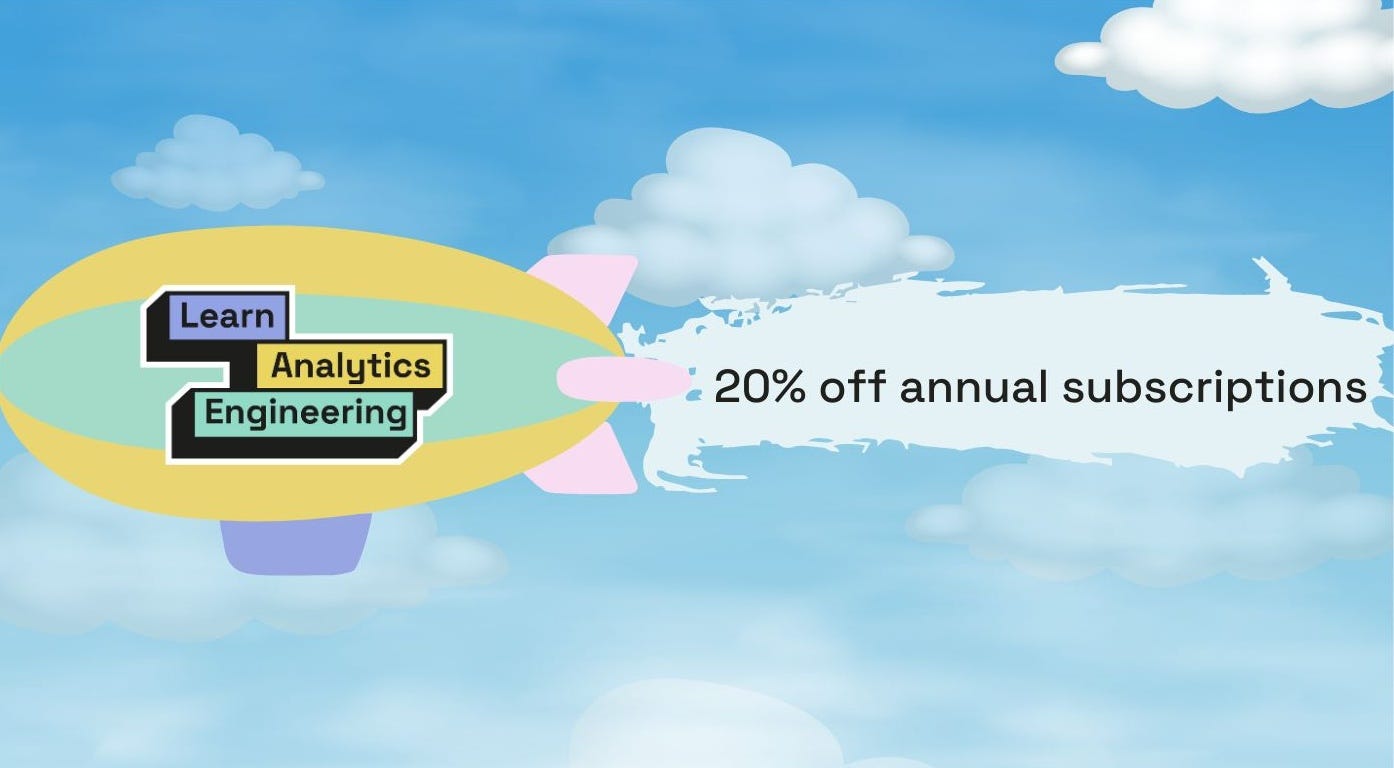Why Reverse ETL is an Essential Piece of Any Data Pipeline
#7: And the best practices to follow when you realize this
It’s officially the last week of fall which also brings the end of Data Pipeline Summer. In these last two months, we’ve learned about the importance of data pipelines and how to ingest, model, and orchestrate data using tools like Airbyte, Snowflake, dbt, and Prefect.
I wanted to end the series by talking about a component that often gets left in the dust- reverse ETL. Reverse ETL takes data that has already been loaded and transformed within your data warehouse and loads it into an external application.
Believe it or not, this can be the most important part of the data pipeline for many companies.
I’ll get into why this is in a second, but first, I wanted to announce a special offer.
If you subscribe to an annual paid newsletter subscription, you’ll receive 20% off the already-reduced price (basically 4 months free!). This annual subscription will include future data challenges and access to all paid posts, including an upcoming one dissecting an open analytics engineering role at Netflix.
I have some exciting newsletter ideas in store that you won’t want to miss.
PS: If you have a learning and development budget, you can use that on paid newsletters!
If you aren’t familiar with the term reverse ETL, I highly recommend first reading through the past newsletter Reverse ETL 101.
Why does reverse ETL matter?
Depending on your business model, reverse ETL could provide data to the largest revenue-generators in the business, enabling them to succeed.
One of the most popular reverse ETL destinations is Hubspot. Hubspot is the lifeblood of a sales team. They use it to prospect leads, reach potential customers, and close deals. The sales team needs data here to get important insights on its customers.
Sure, they’ll check the BI tool of choice, but they can’t act on data in the BI tool. They need to have key customer metrics available for them directly within Hubspot. Reverse ETL allows you to provide metrics to stakeholders where they can act on it.
Keep reading with a 7-day free trial
Subscribe to Learn Analytics Engineering to keep reading this post and get 7 days of free access to the full post archives.


